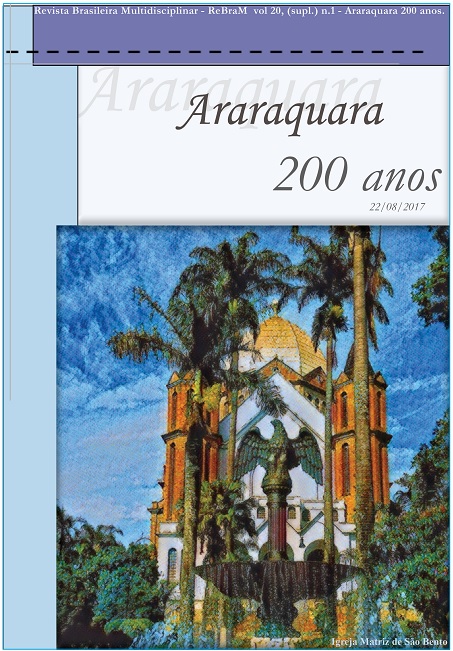Plano municipal de gestão integrada de resíduos sólidos no município de Araraquara-SP: formulação e implementação
Main Article Content
Abstract
A Lei 12.305, promulgada em 02 de agosto de 2010, surge como um marco regulatório junto às questões de resíduos sólidos no Brasil. Ela designou aos municípios a elaboração de planos de gestão de resíduos na tentativa de solucionar os problemas até então enfrentados pela administração local. Contudo, notada as variadas dificuldades municipais em atender as exigências da Política Nacional de Resíduos Sólidos (PNRS), o artigo visa analisar o caso do município de Araraquara-SP, por meio da investigação de seu Plano Municipal de Gestão Integrada de Resíduos Sólidos (PMGIRS) sob a ótica do cumprimento do Artigo 19 da PNRS, que compreende o conteúdo mínimo dos planos municipais, bem como a aplicação da Matriz SWOT com base em entrevistas com gestores do Departamento Autônomo de Água e Esgotos (DAAE) e Cooperativa Acácia, principais órgãos envolvidos na gestão de resíduos sólidos do município. Tais procedimentos tiveram como objetivo contribuir com a construção do cenário local de resíduos sólidos em Araraquara. Resultados evidenciam que o município organizou um estudo nos moldes do Artigo 19 em seu PMGIRS, fixando diretrizes e metas para cada tipo de resíduo sólido encontrado no território. Indicadores apontam que Araraquara, com o passar dos anos, vem se adequando aos preceitos da PNRS e apesar da infraestrutura básica já instalada, o município precisa expandir os investimentos se deseja cumprir as metas declaradas no plano, bem como promover o aprimoramento, modernização e integração do sistema municipal de resíduos sólidos.
Downloads
Article Details
• The author (s) warrant that the contribution is original and unpublished and that it is not in the process of being evaluated in other journal (s);
• The journal is not responsible for the opinions, ideas and concepts issued in the texts, as they are the sole responsibility of the author (s);
• Publishers have the right to make textual adjustments and to adapt the article to the rules of publication.
Authors retain the copyright and grant the journal the right of first publication, with the work simultaneously licensed under the Creative Commons Attribution License, which allows the sharing of work with acknowledgment of authorship and initial publication in this journal.
Authors are authorized to take additional contracts separately, for non-exclusive distribution of the version of the work published in this journal (eg publish in institutional repository or as book chapter), with acknowledgment of authorship and initial publication in this journal.
Authors are allowed and encouraged to publish and distribute their work online (eg in institutional repositories or on their personal page) at any point before or during the editorial process, as this can generate productive changes as well as increase the impact and citation of the published work (See The Effect of Free Access) at http://opcit.eprints.org/oacitation-biblio.html





